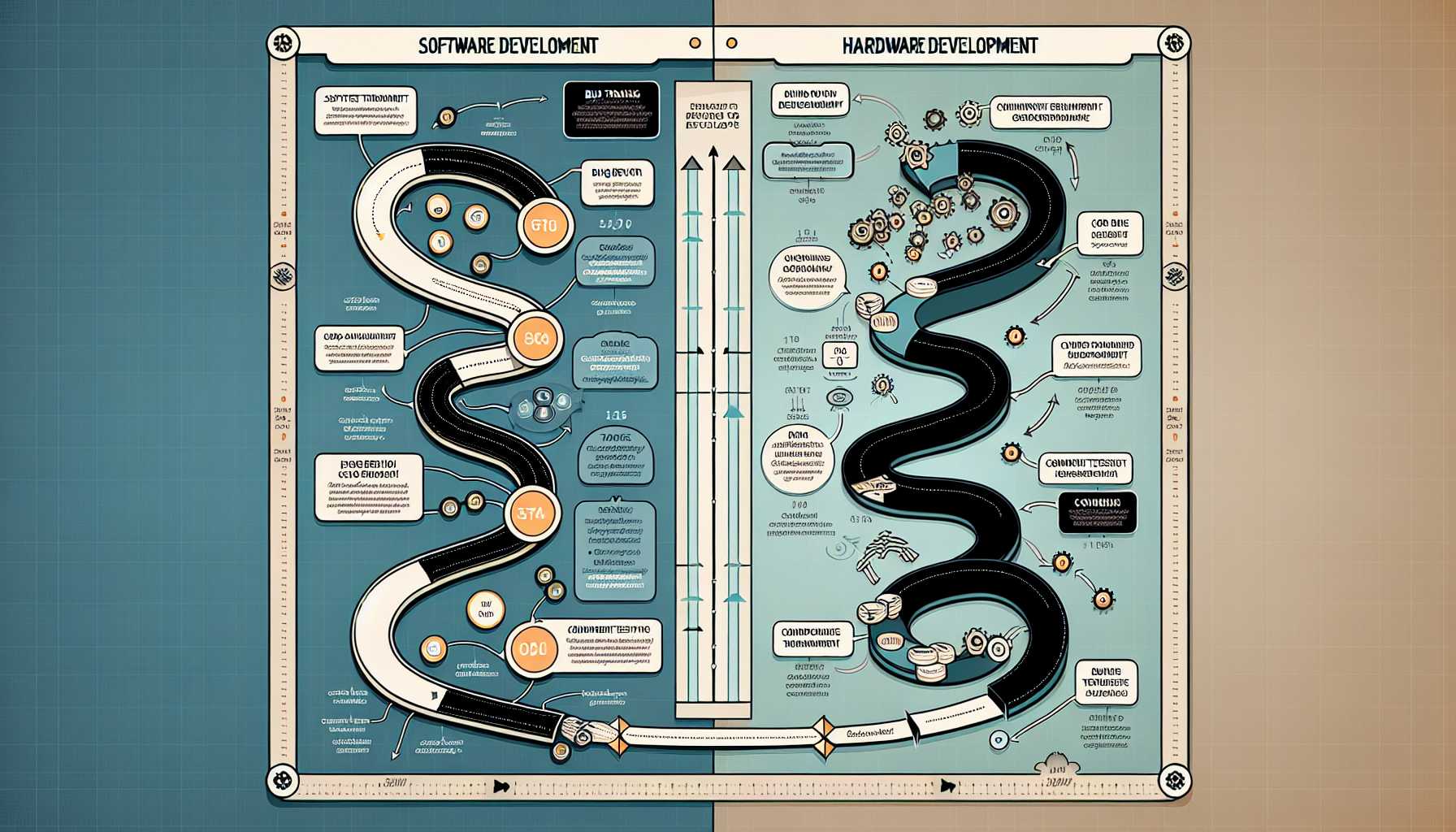Greetings, fellow product maestros. Today, we approach the topic of risk management, a cornerstone in the discipline of product management – a realm where the unexpected is the only certainty. Particularly in the tech industry, the approach to handling risks varies significantly between software and hardware development, each with its unique challenges. I will dissect these differences through the lens of frameworks, supplementing the discourse with my rich trove of personal experiences.
The Divergent Paths of Risk in Software and Hardware
Firstly, it’s vital to understand that the fundamental difference between software and hardware is their inherent malleability. Software, comparatively fluid, can be iterated upon rapidly. Hardware, bound by the laws of physics and manufacturing constraints, follows a slower, more deliberate path. This dichotomy heavily influences risk management approaches.
Risk Management in Software Development
Software product development thrives in an environment that embraces change. Agile methodologies, with their iterative nature, are particularly well-suited to this domain. Risk is managed through continuous feedback, short development cycles, and a commitment to adaptability.
Personal Anecdote: The Moving Target
During my tenure at a SaaS company, we faced an unforeseen change in regulatory compliance standards. Had we adhered strictly to a traditional Waterfall approach, this would have proved disastrous. Thankfully, our Agile process equipped us with the nimbleness required to pivot and incorporate the necessary changes without significant time delays.
Risk Management in Hardware Development
Contrastingly, hardware development demands a more predictive approach. Here, frameworks such as FMEA (Failure Mode and Effects Analysis) and robust quality control checks are instrumental in preempting and mitigating risks.
Personal Anecdote: The Supply Chain Conundrum
In a project developing a consumer electronics device, we hit a snag with component supply shortages. Our initial risk assessment had underestimated this probability. Nevertheless, we mitigated the impact through strategic stockpiling and diversifying our supplier base. It was a valuable lesson that underscored the significance of contingency planning in hardware ventures.
Comparative Risk Assessments
Side by side, the software landscape is replete with risks related to code integrity, security vulnerabilities, and user acceptance. In comparison, hardware brings concerns over material costs, manufacturing defects, and long lead times. Each requires methodologies tailored to its intricacies.
Adapting Risk Management Tactics
Does this imply a rigid divide between software and hardware approaches? Not necessarily. One enlightening experience illuminated the benefit of hybrid tactics. By integrating Agile principles within a hardware development cycle, we brought a new level of flexibility to the process, particularly in prototype testing phases. Conversely, incorporating rigorous quality assurance practices from hardware into software can significantly bolster product robustness.
Navigating Risk with a Dual Lens
As product managers, attuning our risk management strategies to the type of product under our purview is both an art and a science. The dexterity to shift perspectives and methods is invaluable.
Conclusion
Both software and hardware development in the tech industry present unique challenges in risk management. By embracing a framework that is suited to the mutable nature of software and one that respects the disciplined precision of hardware, we can skillfully shepherd our products through the tempests of uncertainty.
As veterans in this craft, I invite you to revisit your own risk paradigms. Reflect on past projects — the crunches and the triumphs — and distill from them a nuanced understanding of risk that will fortify your future endeavors.
Until we cross paths again on this blog, lead boldly, manage smartly, and let your risk management strategies be as dynamic as the products you shepherd.

